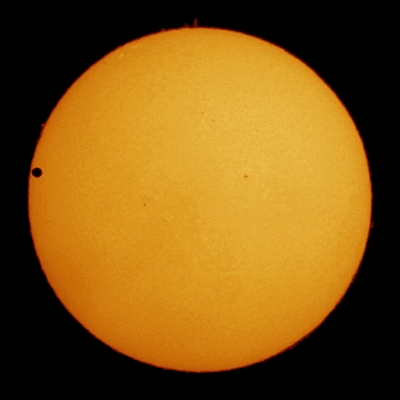
A Venus transit is a phenomenon in which the disk of the planet Venus passes like a small shadow across the face of the Sun. The transit can be seen (with proper protection!) by the unaided eye and looks something like a moving sunspot. (Sunspots take about two weeks to cross the face of the Sun, however, while Venus takes a little over six hours). Among the rarest of astronomical events, Venus transits occur eight years apart—and then don’t happen again for more than a century. The last transit before 2004 took place in 1882.
A Venus transit is similar to a solar eclipse, in which the face of the Sun is blocked by the Moon. But we don’t see a solar eclipse every time the Moon is between Earth and the Sun—which is every time there’s a new Moon. Similarly, we don’t see a transit of Venus every time Venus is between Earth and the Sun—which happens about every 584 days or 1.6 years. That’s because both Venus and the Moon, from our earthly point of view, can be above or below the Sun, and sunlight reaches us undisturbed.
The orbit of Venus around the Sun is tipped in relation to the orbit of Earth. As viewed from the Sun, the orbits cross at two points (called the nodes), and it is only at these points that the planets and the Sun line up directly.
Picture Credit : Google




